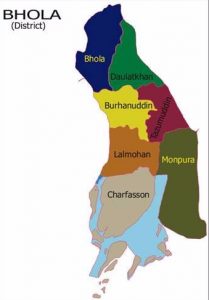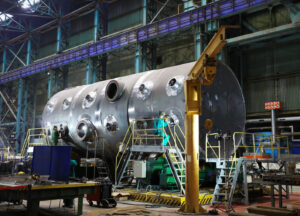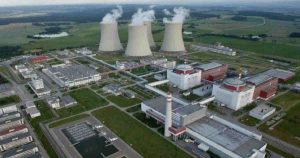The world’s push to reduce greenhouse gases could uproot the livelihood of many people, including the 80 percent of this town’s residents who depend on coal.COLSTRIP, MontanaCOLSTRIP, Montana—At the Rosebud Mine, Gary Lyons deftly uses two small joysticks to operate a 6 million-pound excavator that unearths tons of coal each day. The coal runs the power plant across the highway.White-haired Lyons earns $34 an hour and has worked at the mine his entire career. Good pay for skilled labor is the culture here in Colstrip, a town surrounded by sagebrush that sprung to life in 1924 to provide coal for the locomotives of the Northern Pacific Railway. It’s been a coal town ever since.
Yet Colstrip, population 2,300, faces a cloudy future. While many coal towns have struggled for years, its story shows how far the industry’s tumult has spread beyond the hollows of Appalachia. The United States has steadily cut its use of coal, and it reported last week that coal-fired power plants produced a record monthly low of 29 percent of U.S. electricity in November, down from 39 percent for all of 2014.This slide will likely continue. The cornerstone of President Barack Obama’s climate agenda—the Clean Power Plan—calls for states to cut their heat-trapping carbon emissions by 2030, including a 47 percent reduction for Montana.So the Colstrip Generating Facility, the state’s biggest carbon emitter and the second largest coal-burning power plant west of the Mississippi, looks like a bullseye.As early as this week, lawmakers in Washington state—which gets power from the plant—could vote to shutter two of its four units, partially owned by Puget Sound Electric. Those in Oregon, where two utilities also own a share of the plant, are expected this month to vote on a bill that would end the state’s use of coal by 2035.For residents of Colstrip, where 80 percent of jobs come from either the plant or the mine, this is a tough pill to swallow. “We’ve provided energy at a very cheap price to the Pacific Northwest our entire lives,” say Joe Novasio, a retired production manager at the mine.This town in southeastern Montana is bucking a global shift away from coal, which emits twice as much carbon when burned as natural gas. The historic UN climate accord, reached in December in Paris, nudges nearly 200 countries to slash emissions. To meet its climate pledge and reduce its air pollution, China is closing some of its coal plants.Novasio doesn’t accept the arguments that threaten the town’s livelihood. He’s unconvinced on climate change, and like many in Colstrip, blames the Environmental Protection Agency and environmental groups for the industry’s problems.
“It’s deep, it’s wide and it’s long, just like this pit,” Novasio says of the U.S. campaign against coal, pointing to the 150-foot deep trench stretching behind the excavator, known as a “dragline.”“You come here to make money and raise a family,” he says, “and it’s a damn good place to do it.”Colstrip has tree-lined streets, a winding trail system, and three times as many churches as bars. A golf course is free for residents, and in a rural county where 20 percent of people live below the poverty line, the median household income is about $75,000. In 2004, Sports Illustrated picked it as Montana’s “Sportstown.”Unlike some fossil fuel boom towns, Colstrip’s development was carefully controlled to create a permanent community.“This is the house that coal built,” State Senator Duane Ankney said last month at city hall. The town’s mayor John Williams says the town’s wealth would not be possible if it weren’t for coal, and losing a portion of the plant would carry significant impact. He says that if regulators in the Pacific Northwest approve a bill that cost jobs here, they should also consider a fiscal responsibility to the town. “There are families and workers connected to what is being produced and what they’ve benefitted from for forty years,” he says.Colstrip won’t lose jobs right away. The first state implementations of the Clean Power Plan are not mandated to begin until 2022. The pending legislation in Washington and Oregon don’t call for an immediate shut down but rather a way for those states to wean themselves off coal-generated electricity.The current situation is delicate for Rex Rogers, business manager for the local chapter of the International Brotherhood of Electrical Workers. As the IBEW’s Clean Power Plan representative for Montana, Rogers doesn’t represent just the 258 members of his union who maintain and operate the power plant, but also “the guys who build wind towers, install solar and more efficient systems.” He doesn’t see the two as being in conflict.“How intelligent would you be to go against 200 countries and the pope to deny global warming? That’s a very difficult group of people for me to combat,” says Rogers.Production rates at the plant are still high, he says. The plant was built in two parts. Units 1 and 2, now targeted for closure, went up in the mid 1970s while Units 3 and 4 were added a decade later. Combined, the two older units produce a third of the plant’s power.“Our jobs are still to be here when the wind isn’t blowing and the sun isn’t shining,” Rogers says. He sees paths going forward that could avoid losing jobs in Colstrip, including closing other coal plants in Montana that emit less but also face less stringent pollution controls because of their smaller size.Even the two older units have a place, Rogers says. He refuses to calculate how many union jobs would be on the line with their closure, adding: “If we get there, we’ll get there kicking and screaming.”




